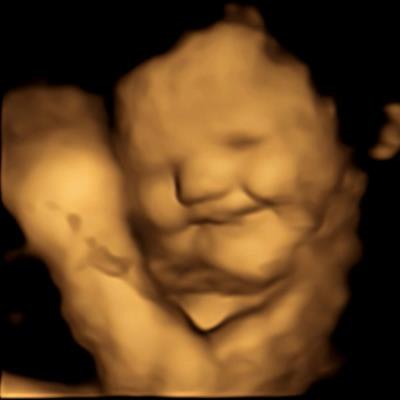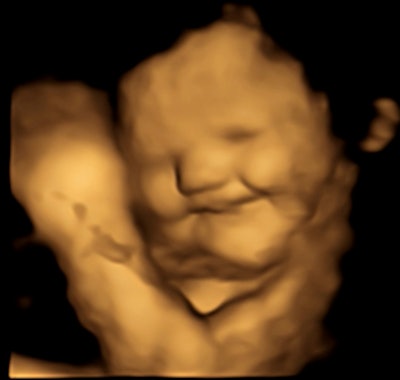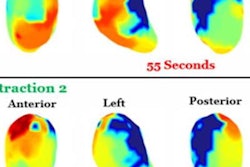
Four-dimensional ultrasound scans show evidence that fetuses at 32 to 36 weeks react positively or negatively to smell and taste, according to a study from the U.K. published September 21 in Psychological Science.
Researchers led by Beyza Ustun from Durham University found via ultrasonic imaging that fetuses gave "cry-face" reactions to kale, which is bitter in taste, and "laughter-face" reactions to sweeter carrot after the mothers ingested capsules for each flavor.
"This shows that fetuses in the last three months of pregnancy are mature enough to distinguish different flavors transferred from the maternal diet," Ustun told AuntMinnie.com. "Midwives can use these results to educate mothers on eating healthy during pregnancy and make them more aware that the food they eat might have an effect on their babies."
As fetuses develop inside the womb, they start to sense their surrounding environment in the amniotic fluid. The sensory information "learned" by fetuses during this time helps newborns adapt to the postnatal environment.
Previous research shows that such sensory familiarization is influenced by the mother's diet. Human fetuses develop taste buds at eight weeks' gestation, while fetal nasal orifices can sense odor-active molecules from 24 weeks' gestation.
Researchers over the years have tried measuring the impact of fetal flavor exposure. Ustun and colleagues wanted to look at fetal movements as fetuses were exposed to kale flavor, carrot flavor, or no flavor at all. They used 4D ultrasound to view reactions.
The team looked at data from a total of 100 mothers between the ages of 18 and 40 with healthy singleton fetuses. The fetuses were between 32- and 36-weeks' gestation. The mothers were given a single capsule containing about 400 mg of carrot or 400 mg of kale powder around 20 minutes before each scan. They were asked not to consume any food or flavored drinks one hour before their scans, as well as not consume anything carrot- or kale-flavored the day of their scans.
The researchers found that the 35 fetuses exposed to carrot flavor showed "lip-corner puller" and "laughter face" expressions more frequently. Meanwhile, the 34 fetuses exposed to kale flavor showed more "upper-lip raiser," "lower-lip depressor," "lip stretch," "lip presser," and "cry-face" expressions.
 Researchers from Durham University examined fetal reactions to flavor capsules ingested by their mothers via 4D ultrasound. Here, a 4D image of a fetus shows a laughter-face reaction after being exposed to the carrot flavor.
Researchers from Durham University examined fetal reactions to flavor capsules ingested by their mothers via 4D ultrasound. Here, a 4D image of a fetus shows a laughter-face reaction after being exposed to the carrot flavor.Ustun said this effect occurs within a "relatively short" time. Around 30 minutes after the mothers ingested the flavor capsules, ultrasound images showed facial reactions by the fetuses. The flavor content of the capsules undergo digestion, absorption into the mothers' bloodstream, metabolization, and circulation through the placenta and fetus. This results in collection in the amniotic fluid and fetal chemoreception.
The team also found that the complexity of facial expressions increased from 32 to 36 weeks in the kale cohort but not in the carrot cohort.
The study authors suggested that their results have important implications for understanding the development of oral and nasal chemoreception. This includes how fetuses "remember" flavors as they adapt to the postnatal environment.
"Given that experimental evidence indicates that prenatal flavor experience is embedded and is accessed postnatally in humans, it could be argued that repeated prenatal flavor exposures may lead to preferences for certain flavor profiles that are consistent with flavor experienced postnatally in very different contexts," they wrote.
Ustun told AuntMinnie.com that the team is following the progress of these babies to see whether they become accustomed to the flavors if exposed in the longer term.
"In this stage, we asked mothers to have carrot or kale flavor every day in the last three weeks of their pregnancy," Ustun said. "After the birth of the baby, we test their reactions to kale and carrots within the first month. The analysis is still ongoing, but we expect to see fewer cry-face reactions to kale if fetuses were exposed to kale in the womb, because they are accustomed to the kale flavor."




















